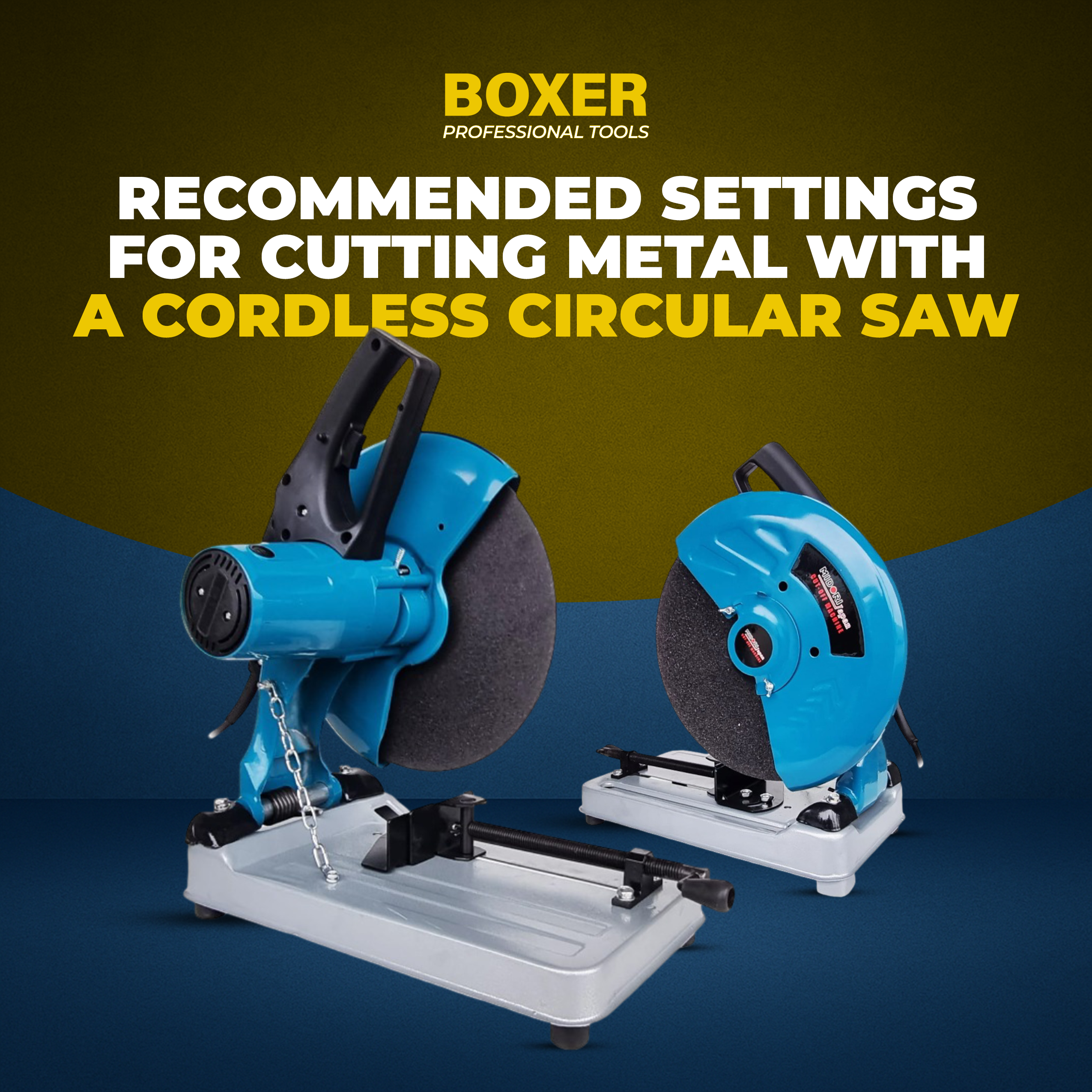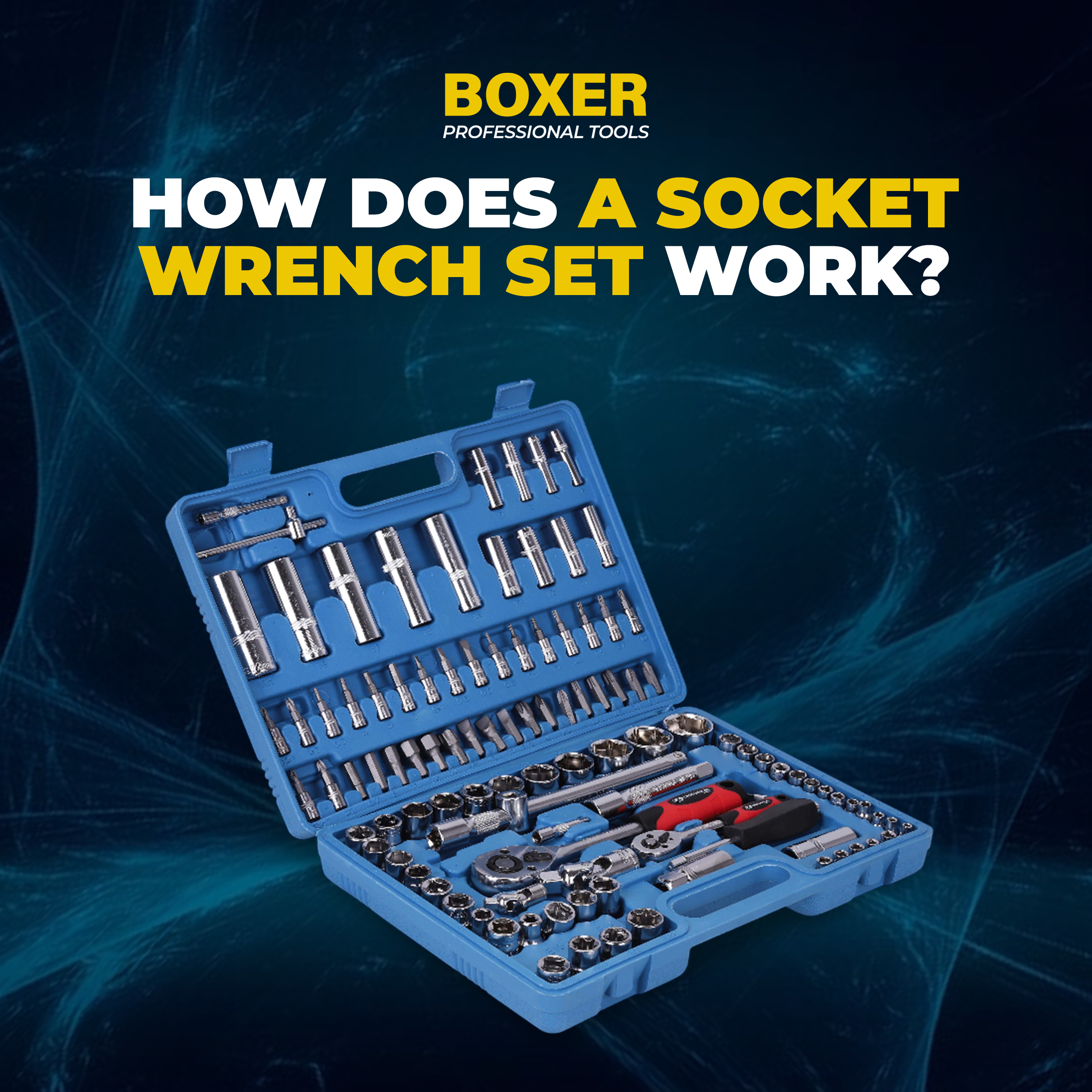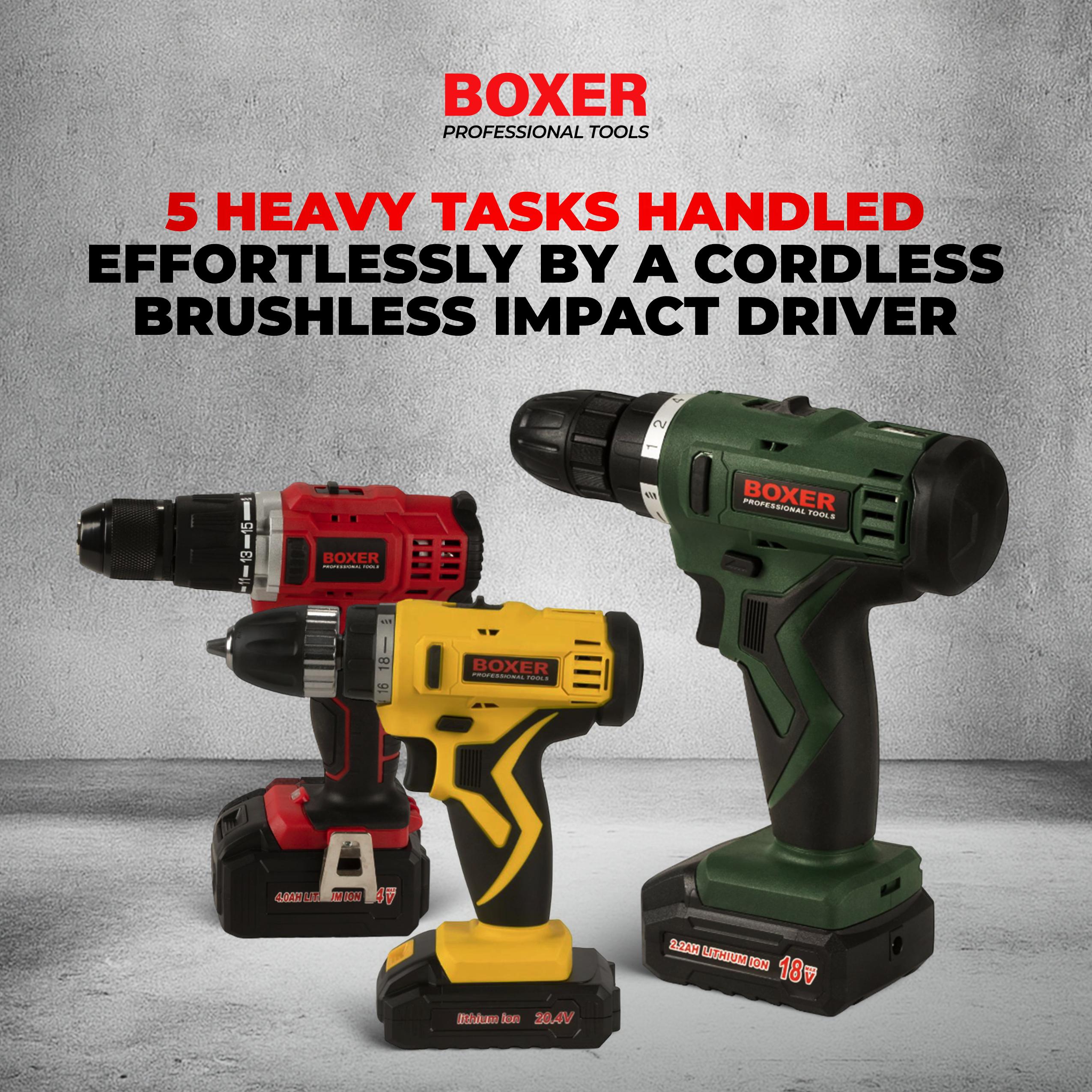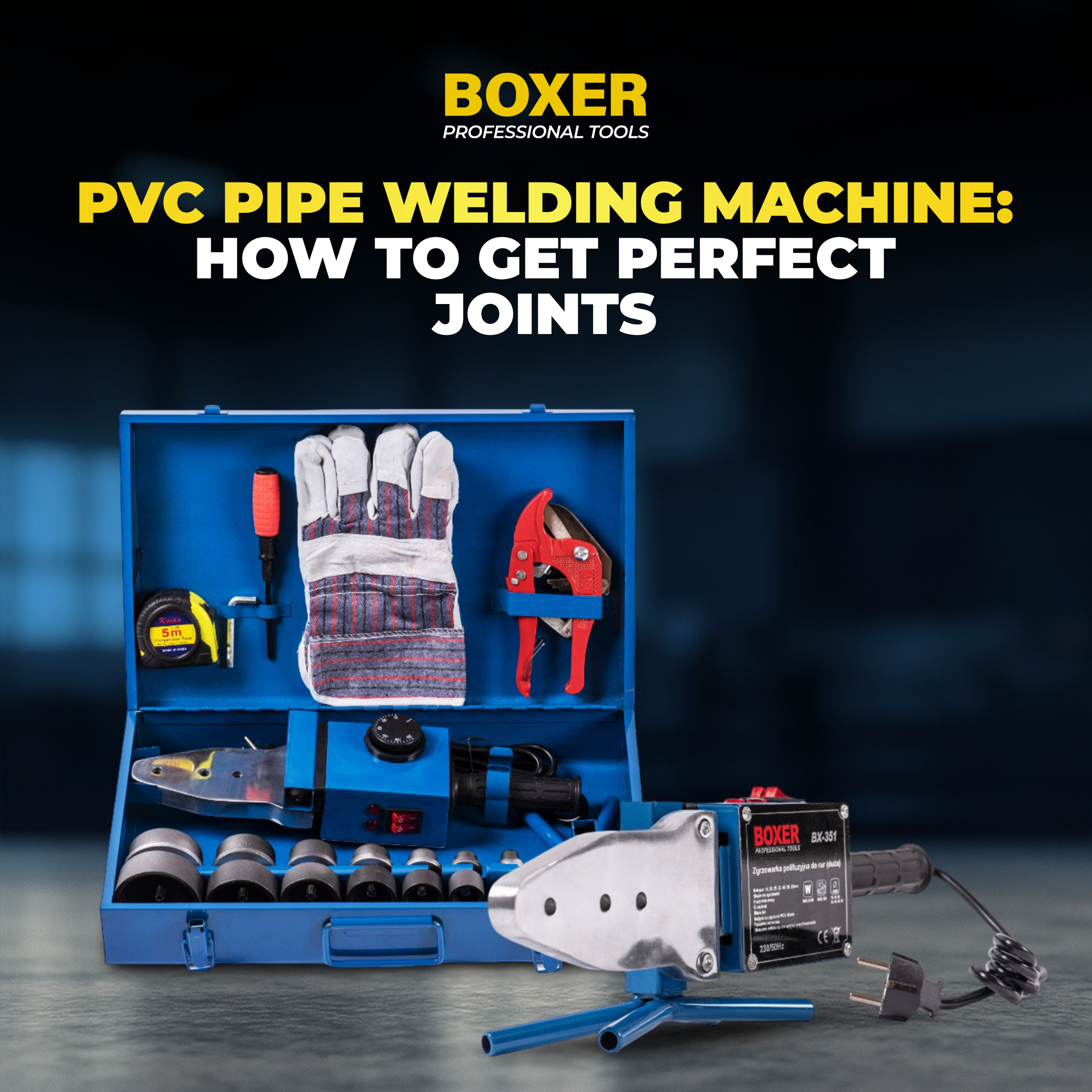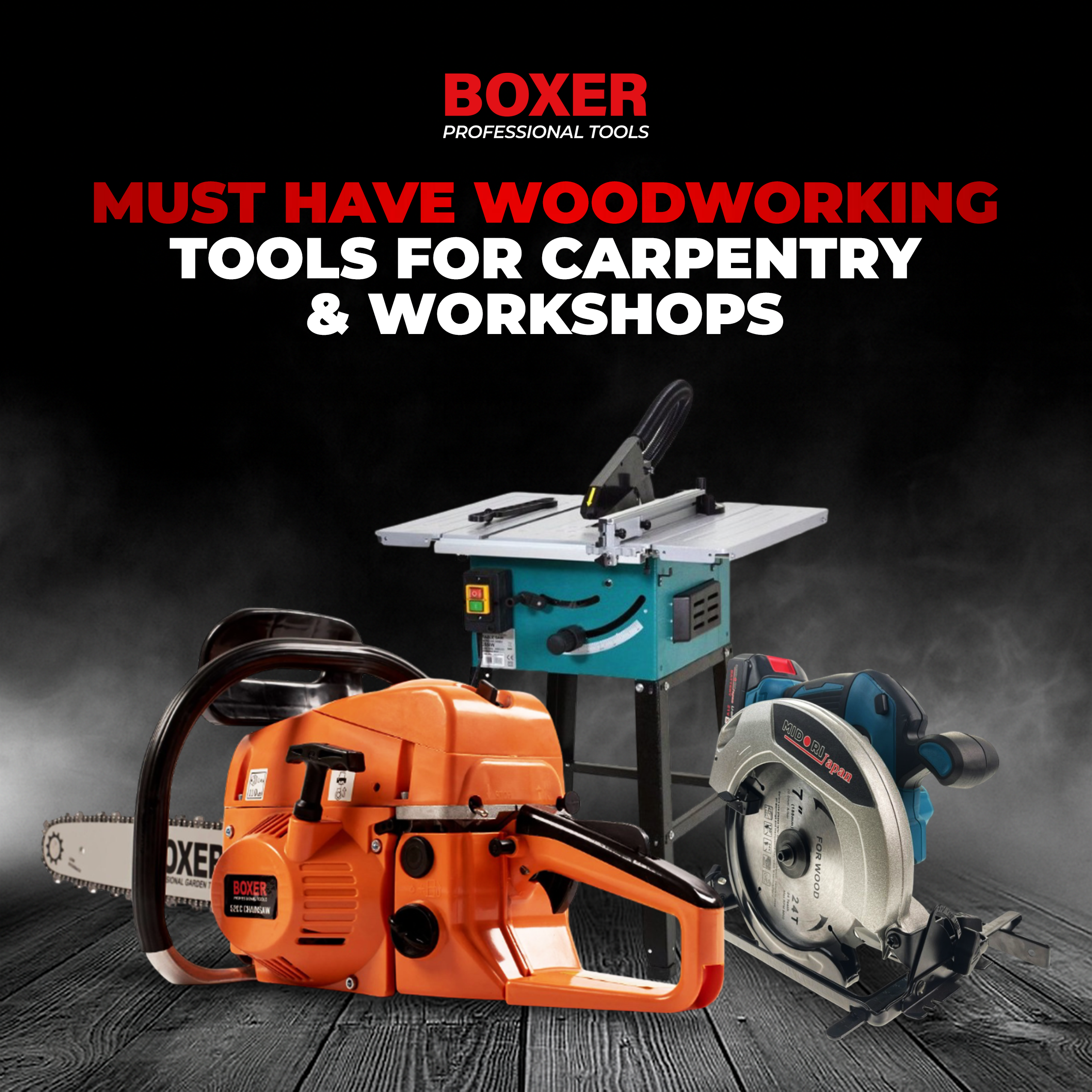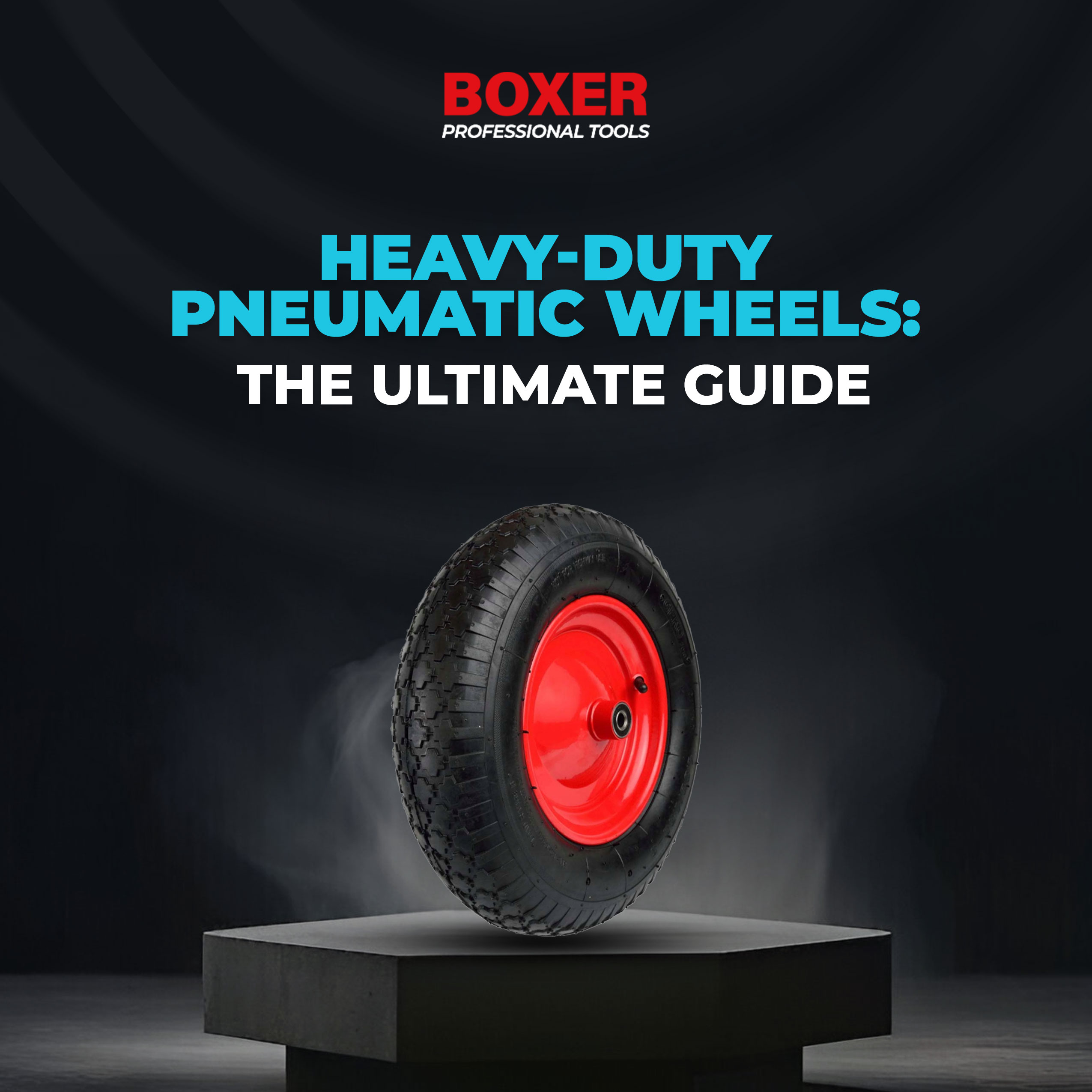
Heavy-Duty Pneumatic Wheels: The Ultimate Guide
Heavy-duty pneumatic wheels are the ideal choice when transporting heavy loads over challenging, rough ground. The air tires on the wheels provide several advantages, such as better shock absorption, a smoother ride, and the ability to easily drive over a wide range of terrain. The wheels need to keep your equipment rolling smoothly whether you are in construction, agriculture, or warehousing. In this guide, we will walk you through the definition of heavy-duty pneumatic wheels, their advantages, and how to choose the best for you.
What Are Heavy-Duty Pneumatic Wheels?
A heavy-duty pneumatic wheel is one that has an air-filled rubber tire. So that the tires can act as shock absorbers and reduce the bumps produced by the hard rubber wheel, they are inflated to a specific pressure. These types of wheels find most of their uses where ground height is irregular or rugged, hence find them well suitable in case of wheelbarrows, factory carts, handling vehicles, handling materials vehicles, and landscaping gear.
Components of a Heavy-Duty Pneumatic Wheel
- Tire: Hard rubber filled with air, which composes the exterior, cushions road bumps and provides shock absorption.
- Hub: Interior piece of the wheel that is attached to the axle. Hubs, which are often manufactured out of steel, plastic, or aluminum, will determine the performance and life expectancy of the wheel.
- Valve: This component is easy to use to inflate or deflate tires. A popular valve type in pneumatic tires is the Schrader valve.
The inner part of the hub where the tire rests is referred to as the rim. Steel is the most popular rim material, as it is strong and durable.
Difference Between Pneumatic and Solid Wheels
The shock-absorbing ability of pneumatic wheels makes them different from solid rubber wheels. Solid wheels do not provide as much flexibility since they consist purely of rubber or plastic. While they last long, they make the ride bumpy on rough terrain. Nonetheless, pneumatic wheels are better suited for all-terrain use, like air industrial tires or wheelbarrow pneumatic wheels, since they are able to roll over uneven terrain like gravel, soil, or sand.
Uses of Using Pneumatic Wheels to Handle Heavy Loads
The ability of pneumatic wheels to absorb shock and their adaptability to different surfaces are the main benefits of utilizing them to carry big loads. The following are the primary advantages:
Shock Absorption
Shock absorption is one of the most notable characteristics of heavy-duty pneumatic wheels. When moving large or delicate objects over rough ground, this is particularly important. The air-filled tire cushions the machinery and cargo being carried by serving as a shock absorber.
Smooth Mobility
Whether you must transport materials around a building site, a storage warehouse, or a wild outdoor path, pneumatic wheels facilitate the process and require less energy. This is because they possess better shock-absorbing characteristics, which reduce vibrations and simplify pushing or pulling loads.
Versatility Across Terrains
Pneumatic wheels provide comfort on a range of surfaces since they are elastic. The wheels provide exceptional traction and stability, making them ideal for riding on mud, sand, gravel, and asphalt. This is true of both heavy-duty outdoor and industrial pneumatic cart wheels. Because of their universal design for a variety of surfaces, the wheels provide flexibility that solid wheels cannot.
Heavy-Duty Durability
The purpose of heavy-duty pneumatic wheels is to support large, unwieldy loads. These wheels are designed to last, whether they are used in material handling equipment, industrial air tires for trucks, or warehouse carts. Their inflatable utility wheels are capable of supporting the heavy usage weight, providing reliable performance in the long term.
Standard Uses of Heavy-Duty Pneumatic Wheels
Heavy-duty pneumatic wheels are used in a variety of industries and sectors where reliability and performance are required. Some typical uses include:
- Construction: Heavy-duty air tires are typically used on construction carts, material haulers, and wheelbarrows to ride over rough, uneven construction terrain.
- Agriculture: In agricultural work, pneumatic wheels are an ordinary choice for moving tools and equipment across farms and fields. All-terrain pneumatic wheels are perfect for navigating tough agricultural terrain such as gardens, fields, and orchards.
- Warehousing: Pneumatic dolly wheel tires and hand truck tires provide frictionless movement of products inside a manufacturing plant setting. Such wheels have the ability to move heavy weights and even uneven floors.
- Landscaping: Outdoor heavy-duty pneumatic wheels are used in landscaping equipment like lawnmowers and garden wagons. They offer a smoother ride on lawns and dirt paths with less ground disturbance.
- Industrial Transport: Industrial pneumatic tire wheels are used on transport carts and vehicles in warehouses and factories to move machinery, equipment, and heavy loads. Their shock-absorbing wheels ensure smooth and efficient transportation of goods.
Pneumatic vs. Solid Rubber Wheels: Which Is Best?
When deciding between pneumatic wheels and solid rubber wheels, the choice depends greatly on the specific needs of your application.
Pneumatic Wheels:
- Advantages: Excellent shock absorption, smooth ride, and flexibility for various surfaces.
- Disadvantages: Prone to punctures and require regular inflation.
Solid Rubber Wheels:
- Advantages: Extremely durable and low-maintenance. They require no inflation and work well on smooth, flat surfaces.
- Disadvantages: No shock absorption and a bumpy ride on rough surfaces. Less ideal for heavy duty transport over rough grounds.
Generally speaking, in the case of rugged outdoor surfaces, heavy-duty inflatable rubber wheels are used due to shock absorption. But where there are flat indoor surfaces, solid rubber wheels may be more convenient.
How to Choose the Right Pneumatic Wheel
The proper choice of the pneumatic wheel is extremely necessary in order to produce the smooth running of your equipment. The following are the major points to be considered:
1. Load Capacity
You need to select a wheel that has the capacity to carry the weight you plan to transport. Heavy-duty pneumatic wheels are ideal for transporting heavy loads, whereas light wheels are appropriate for lighter works.
2. Wheel Size
Wider wheels are ideal for driving over uneven surfaces and rough terrain because they provide optimal stability and traction. In heavy-duty usage, large pneumatic heavy-duty tires are ideal.
3. Tread Pattern
The tread design of your pneumatic tires determines their traction. If you will be driving on sandy ground, sand, or mud, use wheels with more treads. Smooth treads are ideal for indoor use.
4. Hub Type
The hub should match your equipment's axle size and needs. Have sealed bearings for smooth, effective operation. Steel rims are usually stronger and more durable.
Boxer OX905 Heavy-Duty Pneumatic Wheel: A Solution for Demanding Tasks
If you're looking for a heavy-duty pneumatic wheel that can handle heavy loads, look no further than the BOXER OX905 Heavy-Duty Pneumatic Wheel. The 390mm wheel is built to take on even the most demanding material handling applications and is an ideal selection for application in industrial carts, construction equipment, and beyond.
Features:
- Heavy Duty Construction: Since the steel rim and heavy rubber tire make the wheel tough and durable, long-term performance is assured.
- Heavy Load Capacity: OX905 has a load capacity of 250 kg at the most, thus being optimally suited for heavy material and machine movement.
- Smooth Movement: Double ball bearing construction facilitates effortless movement, hence making the wheel optimally suited for frequent and heavy movement.
- Versatile Application: From construction, industrial, to even household chores, this wheel can handle anything.
- Simple Installation: Simple installation with the 12mm axle hole and 97mm hub width.
- Puncture-Proof: The heavy rubber tire minimizes flat risk, keeping your equipment running without unnecessary tire changes.
Technical Specifications:
- Model: BOXER OX905
- Outer Diameter: 390mm
- Tire Width: 97mm
- Inner Diameter: 220mm
- Axle Hole: 12mm
- Hub Width: 97mm
- Bearing Type: Double ball bearing
- Material: Rubber tire, steel rim
- Maximum Load: 250kg
- Maximum Pressure: 2.1 bar / 30 psi
BOXER OX905 is a dependable and long-lasting solution for any heavy-duty application, offering smooth rolling and high load-carrying capacity. It's a great investment for anyone seeking to improve the performance of their equipment.
Maintenance Tips for Pneumatic Wheels
Routine maintenance is the key to extending the life of your heavy-duty pneumatic wheels. Keep your wheels in top shape by doing the following:
Inflation
Ensure that your pneumatic wheels are inflated to the manufacturer's recommended level. Over-inflation or under-inflation can cause a bumpy ride, premature wear, or even damage to the tires.
Puncture Repair
If punctured, have it repaired at once to avoid damage. Repair minor punctures with a puncture repair kit or seal them with a sealant.
Storage
Store your inflatable utility wheels in a dry, cool place to protect them from the environment. Both high heat and extreme cold temperatures will cause the rubber to break down and reduce the life of the wheel.
Regular Inspections
Inspect the wheels for wear and tear, such as cracks or flat spots, and replace damaged wheels in a timely fashion. Regular maintenance and repairs using Boxer Tools will keep your wheels in excellent condition.
Troubleshooting Common Pneumatic Wheel Issues
It's critical to spot and fix issues with pneumatic wheels to ensure they remain in good working order:
Leaks
Leaks are usually caused by punctures or valve deterioration. Check for wear on a regular basis and seal with sealer in the event of minute punctures.
Wobbling
Wobbling may mean misalignment or loose axle. Secure loose parts and check the wheel for balance.
Flat Tires
Should the tire be deflated, check the air pressure and fill as needed. For recurring flat tires, change the wheel.
FAQs Regarding Pneumatic Wheels
Q: What is the best tire pressure for pneumatic wheels?
A: Use the manufacturer's guideline. Heavy-duty pneumatic wheels generally work best at 30-50 PSI.
Q: Will pneumatic wheels work on any kind of surface?
A: Yes, heavy-duty pneumatic wheels are ideal for running on mud, sand, gravel, and asphalt roads.
Q: How can I make my pneumatic wheels last longer?
A: Hold the right air pressure, check regularly for damage, and store the wheels in good condition.
Heavy-duty pneumatic wheels are an essential for anyone who works with heavy equipment or heavy materials. Construction, agriculture, and warehousing are just a few among many fields where these wheels can be used to provide you with the strength, shock absorption, and flexibility required for rough terrain. With the implementation of these recommendations in this manual, you are able to select appropriate wheels, conduct necessary maintenance, and receive extended equipment life. Keep in mind that Boxer Tools possesses the proper tools to assist you in fixing and maintaining your pneumatic wheels to impeccable condition for extended operation.
For those looking for a high-quality heavy-duty pneumatic wheel, the BOXER OX905 Heavy-Duty Pneumatic Wheel is a good option, with high load capacity, smooth travel, and puncture resistance.
Copyright © 2025 Boxertools | Powered By Orance Media Group


